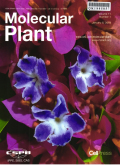- 钛学术文献服务平台 \
- 学术期刊 \
- 基础科学期刊 \
- 生物科学期刊 \
- 分子植物(英文版)期刊 \
Single-nucleus RNA and ATAC sequencing reveals the impact of chromatin accessibility on gene expression in Arabidopsis roots at the single-cell level
Single-nucleus RNA and ATAC sequencing reveals the impact of chromatin accessibility on gene expression in Arabidopsis roots at the single-cell level
基本信息来源于合作网站,原文需代理用户跳转至来源网站获取
摘要:
Similar to other complex organisms,plants consist of diverse and specialized cell types.The gain of unique biological functions of these different cell types is the consequence of the establishment of cell-type-specific transcriptional programs.As a necessary step in gaining a deeper understanding of the regulatory mechanisms controlling plant gene expression,we report the use of single-nucleus RNA sequencing(sNucRNA-seq)and single-nucleus assay for transposase accessible chromatin sequencing(sNucATAC-seq)technologies on Arabidopsis roots.The comparison of our single-nucleus transcriptomes to the pub-lished protoplast transcriptomes validated the use of nuclei as biological entities to establish plant cell-type-specific transcriptomes.Furthermore,our sNucRNA-seq results uncovered the transcriptomes of additional cell subtypes not identified by single-cell RNA-seq.Similar to our transcriptomic approach,the sNucATAC-seq approach led to the distribution of the Arabidopsis nuclei into distinct clusters,suggest-ing the differential accessibility of chromatin between groups of cells according to their identity.To reveal the impact of chromatin accessibility on gene expression,we integrated sNucRNA-seq and sNucATAC-seq data and demonstrated that cell-type-specific marker genes display cell-type-specific patterns of chro-matin accessibility.Our data suggest that the differential chromatin accessibility is a critical mechanism to regulate gene activity at the cell-type level.

推荐文章
14位Single-slope ADC行为级建模与仿真
单斜模/数转换器
行为级建模
红外焦平面
Simulink
集成电路设计
功能仿真
基于改进的Single-pass算法的新闻热点的发现
新闻热点
话题发现
聚类算法
孤立点预处理和 Single-Pass 聚类结合的微博话题检测方法
微博
热点话题
增量聚类
孤立点
话题检测
内容分析
关键词云
关键词热度
相关文献总数
(/次)
(/年)
引文网络
引文网络
二级参考文献 (76)
共引文献 (4)
参考文献 (52)
节点文献
引证文献 (0)
同被引文献 (0)
二级引证文献 (0)
1993(1)
- 参考文献(0)
- 二级参考文献(1)
1995(2)
- 参考文献(0)
- 二级参考文献(2)
1997(1)
- 参考文献(0)
- 二级参考文献(1)
2001(1)
- 参考文献(0)
- 二级参考文献(1)
2003(4)
- 参考文献(1)
- 二级参考文献(3)
2004(2)
- 参考文献(1)
- 二级参考文献(1)
2005(7)
- 参考文献(1)
- 二级参考文献(6)
2007(8)
- 参考文献(3)
- 二级参考文献(5)
2008(3)
- 参考文献(0)
- 二级参考文献(3)
2009(1)
- 参考文献(1)
- 二级参考文献(0)
2010(7)
- 参考文献(4)
- 二级参考文献(3)
2011(3)
- 参考文献(1)
- 二级参考文献(2)
2012(5)
- 参考文献(1)
- 二级参考文献(4)
2013(4)
- 参考文献(0)
- 二级参考文献(4)
2014(10)
- 参考文献(1)
- 二级参考文献(9)
2015(14)
- 参考文献(7)
- 二级参考文献(7)
2016(8)
- 参考文献(2)
- 二级参考文献(6)
2017(8)
- 参考文献(2)
- 二级参考文献(6)
2018(16)
- 参考文献(10)
- 二级参考文献(6)
2019(23)
- 参考文献(17)
- 二级参考文献(6)
2021(0)
- 参考文献(0)
- 二级参考文献(0)
- 引证文献(0)
- 二级引证文献(0)
引文网络交叉学科
相关学者/机构
期刊影响力
分子植物(英文版)
主办单位:
中科院上海生命科学研究院植物生理生态所
中国植物生理学会
出版周期:
月刊
ISSN:
1674-2052
CN:
31-2013/Q
开本:
出版地:
上海市岳阳路319号31B楼
邮发代号:
创刊时间:
语种:
eng
出版文献量(篇)
1996
总下载数(次)
1
总被引数(次)
17663
期刊文献
相关文献
推荐文献
- 期刊分类
- 期刊(年)
- 期刊(期)
- 期刊推荐
力学
化学
地球物理学
地质学
基础科学综合
大学学报
天文学
天文学、地球科学
数学
气象学
海洋学
物理学
生物学
生物科学
自然地理学和测绘学
自然科学总论
自然科学理论与方法
资源科学
非线性科学与系统科学
分子植物(英文版)2022
分子植物(英文版)2021
分子植物(英文版)2020
分子植物(英文版)2019
分子植物(英文版)2018
分子植物(英文版)2017
分子植物(英文版)2016
分子植物(英文版)2015
分子植物(英文版)2014
分子植物(英文版)2013
分子植物(英文版)2012
分子植物(英文版)2011
分子植物(英文版)2010
分子植物(英文版)2009
分子植物(英文版)2008
分子植物(英文版)2021年第8期
分子植物(英文版)2021年第7期
分子植物(英文版)2021年第6期
分子植物(英文版)2021年第5期
分子植物(英文版)2021年第4期
分子植物(英文版)2021年第3期
分子植物(英文版)2021年第2期
分子植物(英文版)2021年第1期

 免费查重
免费查重










